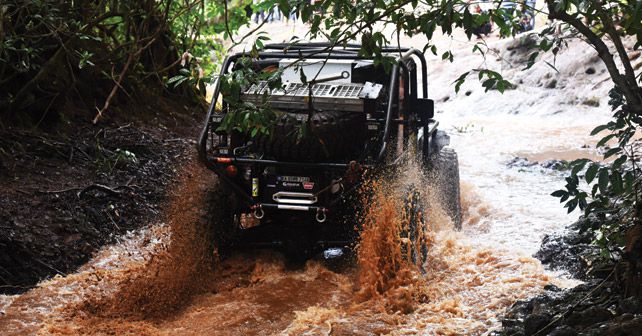
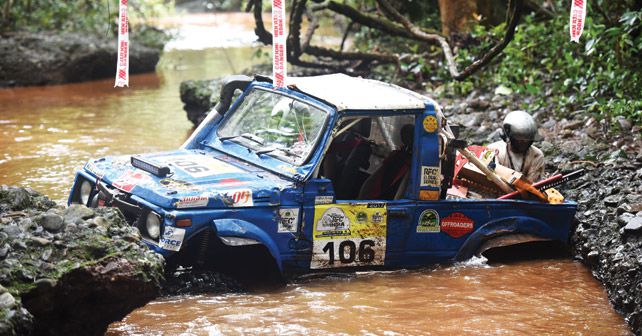
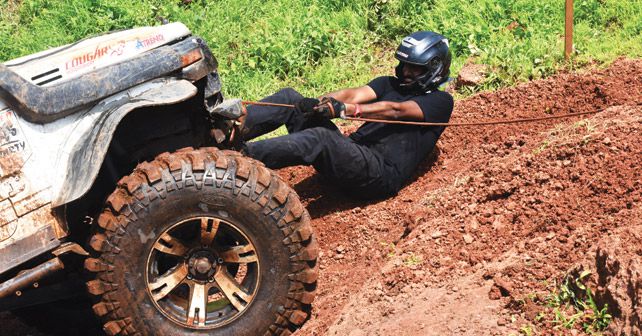
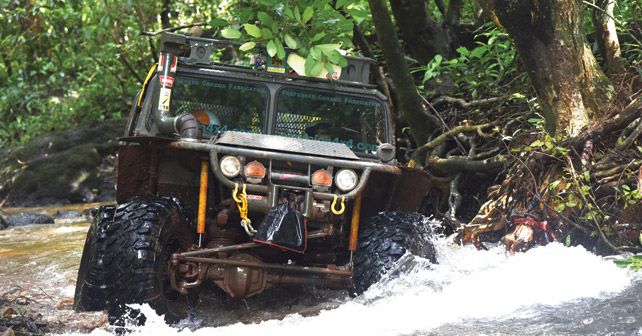

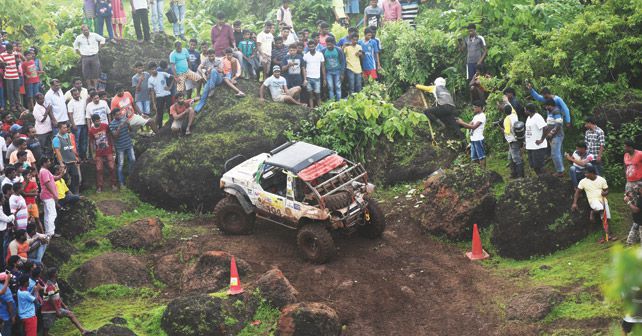
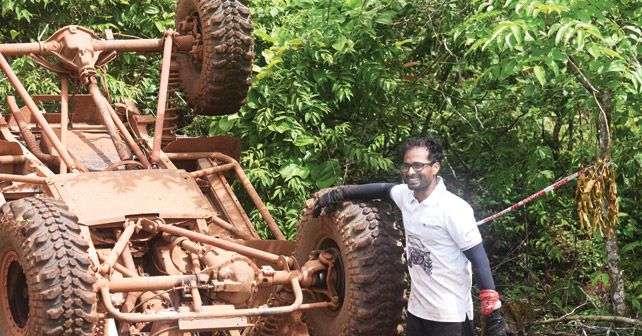
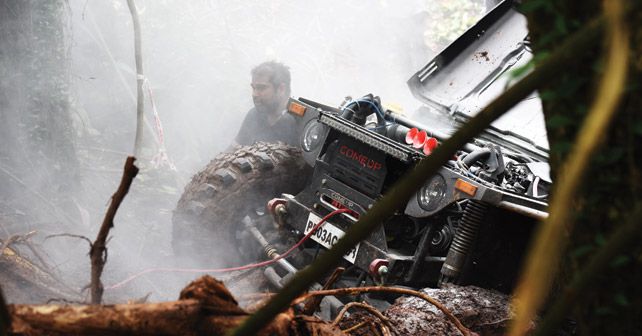
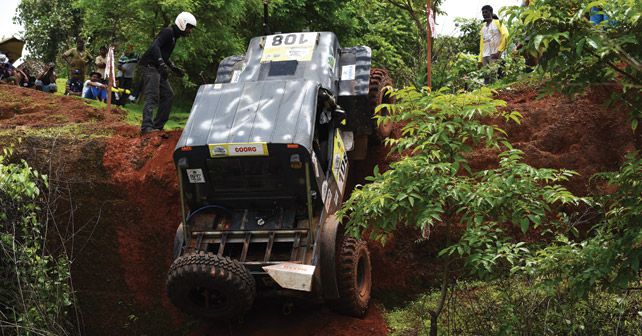
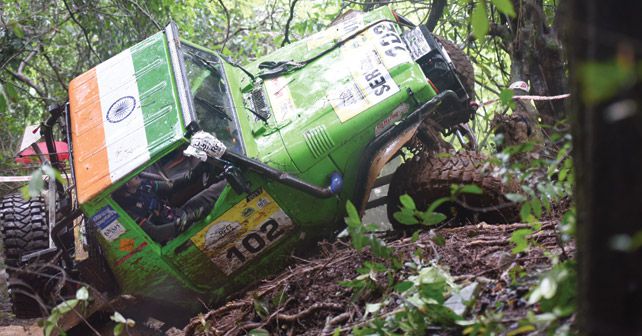
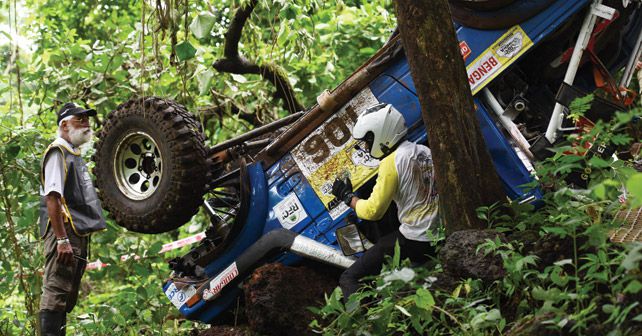
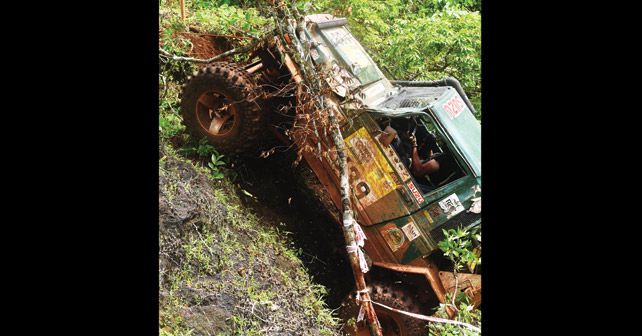

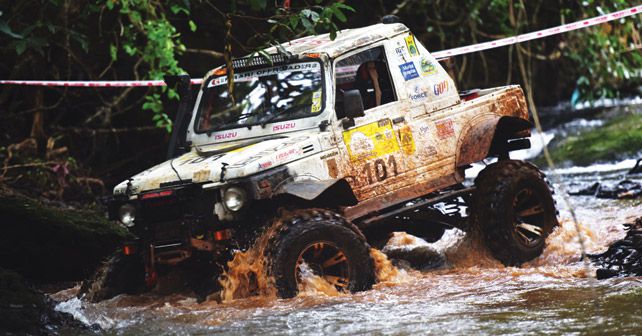
With an event structure that made competitors push themselves from the beginning, the fourth edition of the RFC India asked more from those who chose to brave it. Ashish Gupta, the man responsible for bringing a round of the Rain Forest Challenge Global Series to India is not known for hyperbole.
With an event structure that made competitors push themselves from the beginning, the fourth edition of the RFC India asked more from those who chose to brave it.
Ashish Gupta, the man responsible for bringing a round of the Rain Forest Challenge Global Series to India is not known for hyperbole. He tends to keep his expectations realistic and gives credit where credit is due.
So when he said that the top four finishing teams of the latest edition of the Rain Forest Challenge India are capable of taking part in the Grand Final in Malaysia, there was substance to the statement. Proof of that was in the stages for this year’s event that immediately challenged the competitors. Thick jungle stages, lots of climbs through water and slippery slopes under thick tree cover made the fourth edition of the RFC India almost similar to the main event in Malaysia, as per those who have seen both.
Of course, there were still stages that had carried over from previous events and put more of an onus on speed, but the addition of the heavy jungle stages on the opening day and the fifth day of the event made the going a lot tougher for competitors. Cars went turtle, navigators and drivers alike were on the edge of exhaustion and of losing their composure entirely. It all made the course master David Metcalfe and ‘Metcalfe’s Merry Men’ - who assist him in coming up with the stages that the competitors have no knowledge of prior to them tackling it – very happy indeed.

There was still the usual feedback of competitors who tried too hard to make it through stages without using a winch, but all in all, drivers and navigators seemed a lot less full of bravado.
But that is not to say that there were some who bit off more than they could chew. For instance, Gerrari Offroaders’ Kabir Waraich and Gagan Sachdeva ‘celebrated’ their return to the team that beat the factory teams from title sponsors Force Motors in pretty ignominious fashion.
Stepping Up
Driving a self-made hybrid of a Gypsy with a Toyota V-8 engine from a Landcruiser and axles from a Nissan Patrol, the Gerrari returnees suffered mechanical issues one after another before finally calling it quits on the second day. Not being able to test the vehicle enough prior to the event was the root cause of the problem but Waraich’s effort was still a very clear sign of the changing face of RFC India.
Although, the event was won again by Gurmeet Virdi and Kirpal Singh Tung in their relatively modest Baleno-engined Gypsy, a Toyota FJ40 bodied car with a Landcruiser engine did manage to finish fifth overall. That was Mervyn Lim and Tan Choon Hong, driving for Team Fairmont. The arrangement may just turn out to be a temporary one as Force Motors is rumored to be taking the next step in prepping a car for the RFC.
Spaceframe construction is the de facto way to go for competitors in the Grand Final and in Global Series in more experienced and affluent countries. After being beaten last year, Force Motors feels that a lighter car may just do the trick for them. Of course, who they get to drive for them would be crucial as Virdi and Tung proved in last year’s Grand Final.
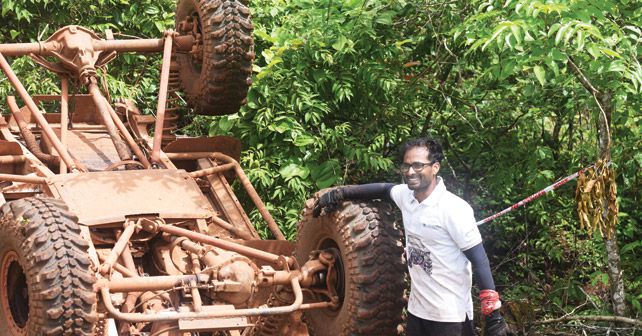
Finishing eleventh overall and winning their class proved that it does ultimately come down to who is behind the wheel. Such was the case with the team that challenged Virdi and Tung the hardest too. Siddhartha Santosh and navigator Prithviraj AC of BODA had gotten to within one point of Virdi and Tung before their continuing trend of rolling the car compromised their charge and dropped them out of the top three. Prithviraj even ended up with a sore back that prevented him from running properly. But a top four finish means that Santosh and Prithviraj will be headed to Malaysia for the Grand Final along with Virdi/Tung, second placed Jagat Nanjappa/Chetan Changappa and third placed Sanbir Singh Dhaliwal and Gurpratap Singh.
Cougar Motorsport has expanded the automatic entry berths for the Grand Final to the top four Indian teams at RFC India this year. It goes back to Gupta’s belief of the top Indian teams having enough experience to take on far trickier and slushier conditions.
Top Dogs
Keeping a cool head about them was how Virdi and Tung were able to clinch back-to-back wins, even overcoming a very late scare of their primary winch packing up as they finished the very last stage of the event.
This year, the decision was taken to hold the traditional prologue stages at Dona Paula’s Rajiv Gandhi IT Park on the final two days instead of at the beginning. That was not only at the request of the competitors who wanted to get right into the action – course master Metcalfe duly obliged – but also to give spectators the chance to see the winners crowned after five days of the local and national media report on the event.
The crowds that came on Saturday and Sunday were treated to a masterful performance by Nanjappa, who at 66-years-old seems to have more energy and optimism than those decades younger than him. His relatively modestly modified Thar gave him the torque and sturdiness he needed to follow navigator Changappa’s lead through the stages and place second overall.
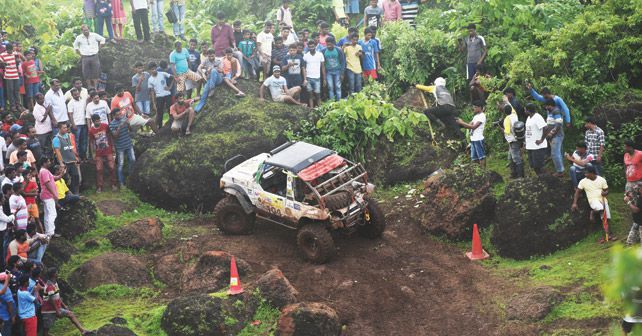
It was a pretty remarkable performance from a remarkable figure of Indian motorsport. A former nine-time national rallying champion on motorcycles, Nanjappa won his final national rallying crown twenty years ago. At times even the officials of the RFC India got caught up reminiscing about reading rally reports in newspapers of Nanjappa tearing through rallies that were as long as the cross-country rallies of today in terms of the total timed distances.
Nanjpappa himself lamented that overpopulation and the difficulty of finding permission to close off public roads has set rallying in India on a downward trajectory. It is certainly not what one would want to hear, especially in the current scenario of Indian National Rally Championship rounds essentially being run just on Sundays and two-wheel rallying being held on just a confined loop.
Fortunately, there still seems to be appeal for cross-country rallies, especially the Raid de Himalaya and Desert Storm, with other events trying to use the popularity of those two events to claim a foothold as well.
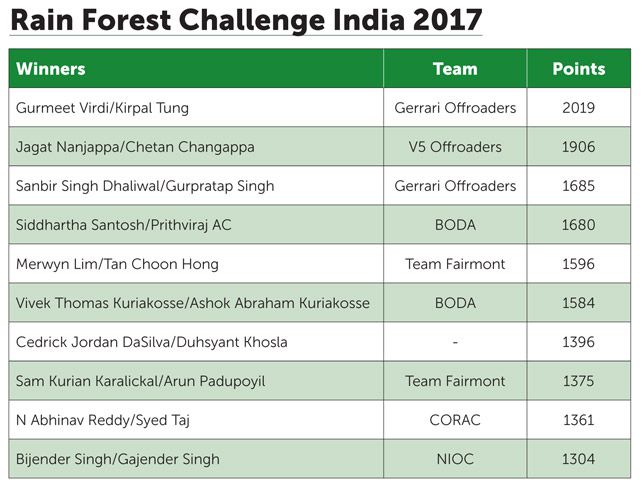
At times the popularity of the RFC India – due to its unique nature and excellent organization – has attracted sneers by those in rallying and with a rallying background. But there is no need for a comparison in the first place. The participants in RFC India are largely well-heeled individuals who don’t baulk at spending a lot of their money to prepare their cars and practice too. Some of the winches used cost as much as a small hatchback for example.
The RFC in India is, in fact, a good break from the usual in-fighting and doom and gloom that one tends to hear of in domestic motorsport. Not to mention, there is no scenario of warring camps and intense discussions about the future of motorsport. Being at the RFC India is akin to living in the moment. Everyone is there to enjoy the ride as much as possible as they know that the real-world beckons once the week is up. Not to mention the green and non-touristy parts of Goa make for a good break from the usual motorsport venues of the country. They will still be there, along with the cast of the usual suspects fighting the good fight. I.e. how to avoid being snared by a real job!

Write your Comment on